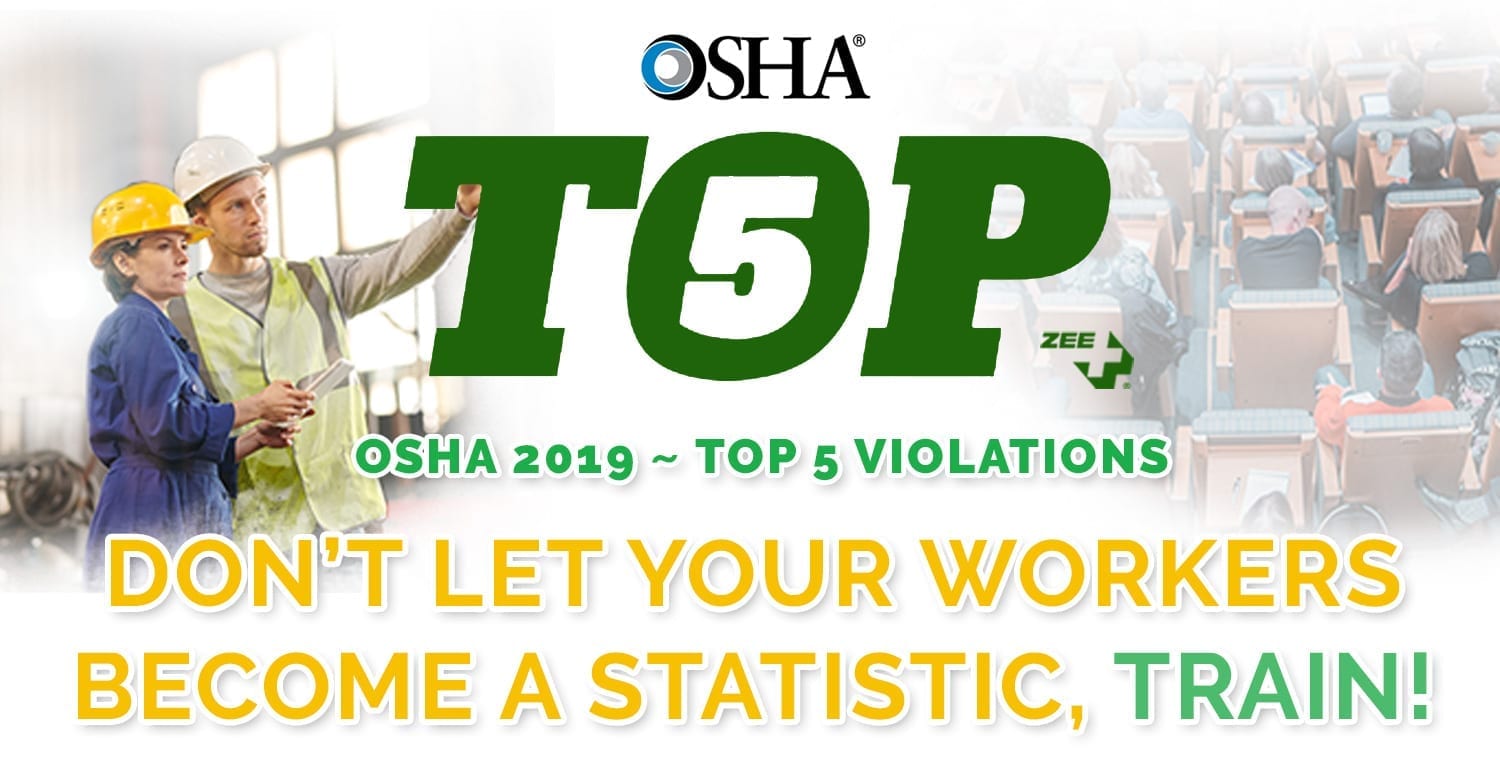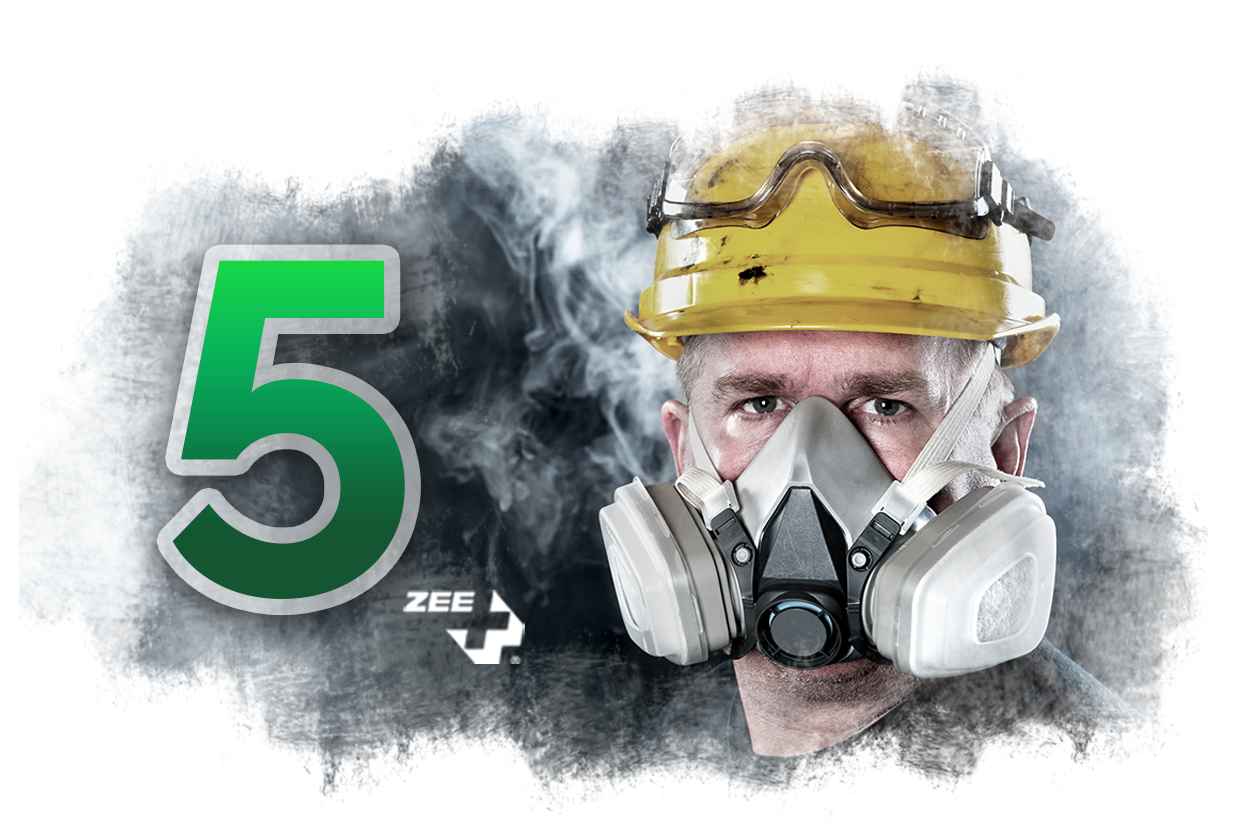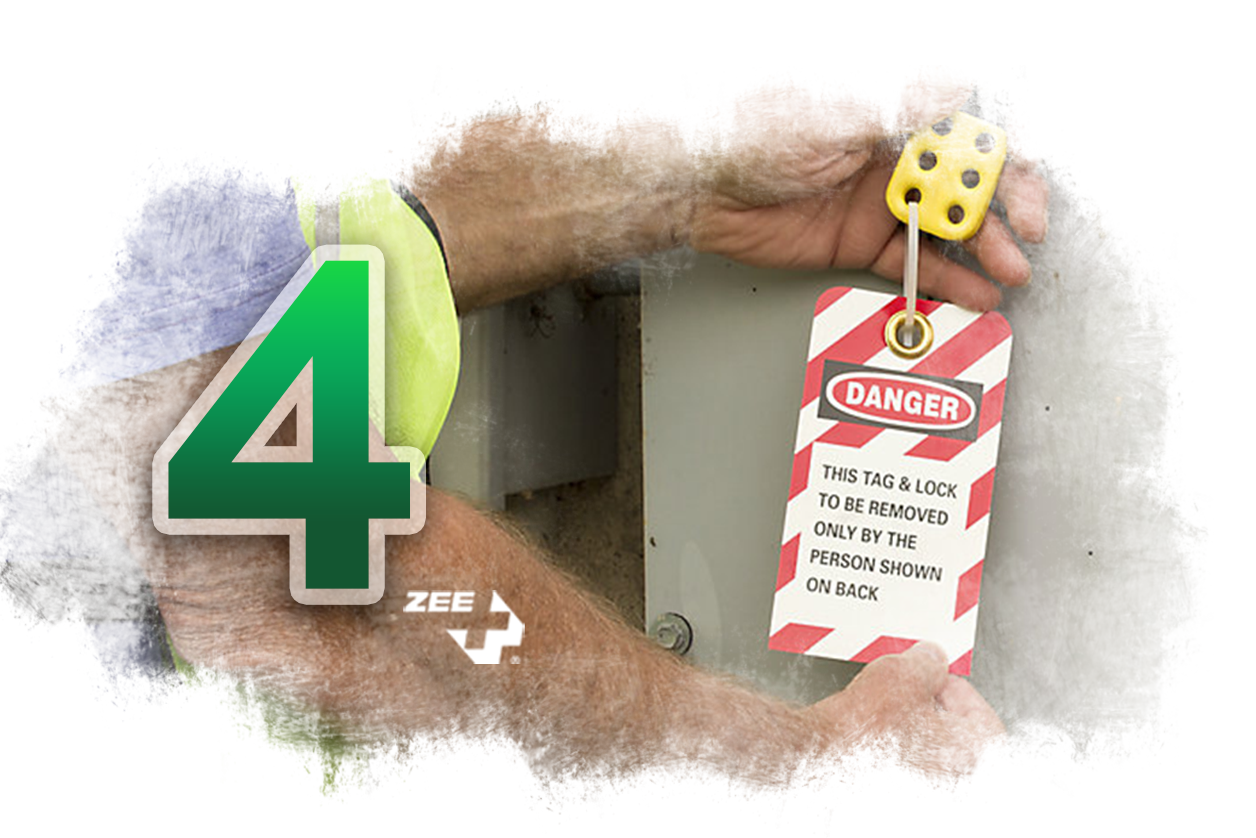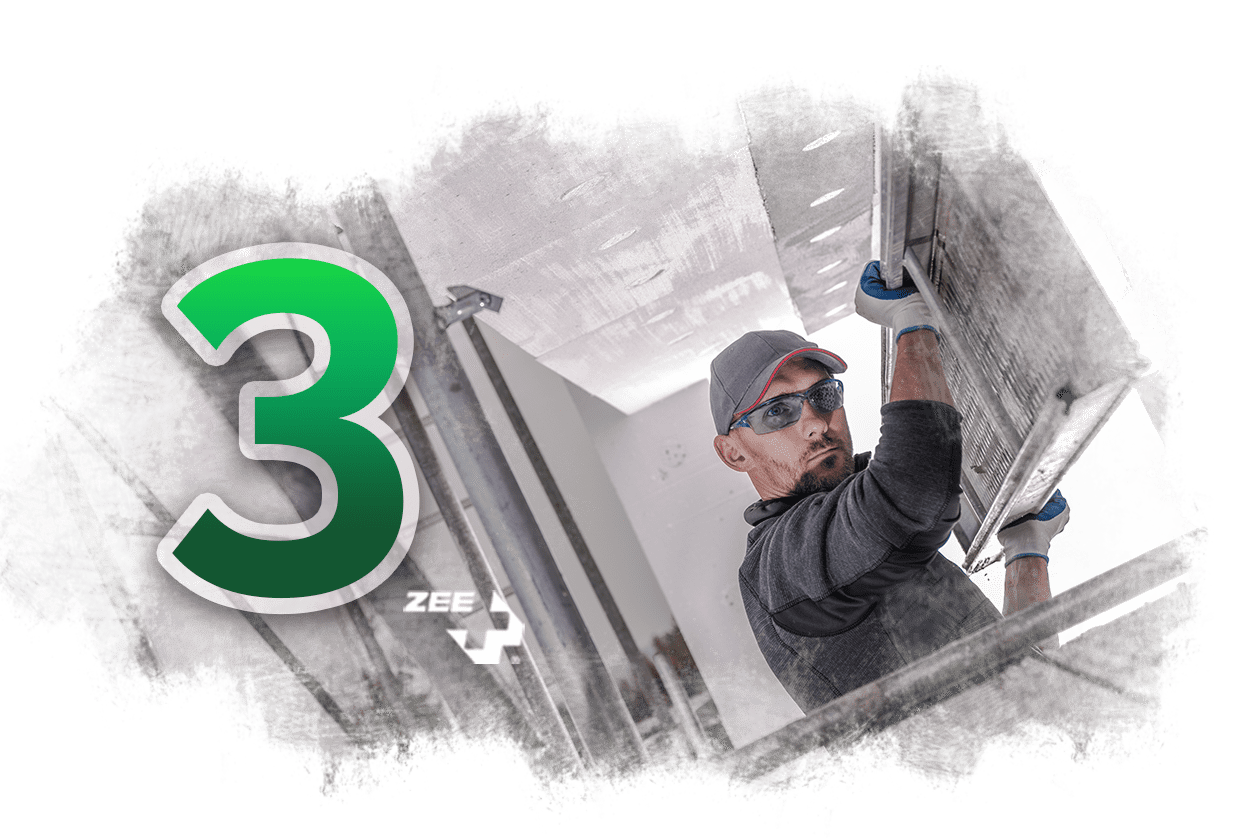
We’ve been counting down the TOP 10 OSHA VIOLATIONS of 2019.
We conclude this feature with the TOP 5 OSHA Risks and Hazards facing your workforce and threatening your productivity and profitability.
Provide Assurance, Find Assurance.
ZEE Medical Service Offers Specialized Training Classes for Any Size Group.
ZEE Provides Health and Safety Products and Equipment Delivered! ZEE provides Inspection, Recommendation, Training, Certification and Ongoing Support in all your OSHA ANSI Readiness.
Call 1-800-282-7755 today for more information on
The ZEE Advantage!
OSHA TOP 5 2019 VIOLATIONS

RESPIRATORY PROTECTION PROGRAM
(#29 CFR 1910134 & 42 CFR Part 84)

Lockout/Tagout
(1910.147)
Violations: 2,606 in 2019 • 2,944 in 2018
Accidental start-up of machinery often presents catastrophic risks that can cause serious physical injuries or death. By implementing proper lockout/tagout procedures and training, risks such as employee injuries, damage to equipment, production interruption, and liability can be avoided.
Put a Lock on Incidents Train Today!
LOCKOUT/TAGOUT TRAINING PROGRAM
(OSHA Regulation #29 CFR 1910147)

FALL PROTECTION PROGRAM
(OSHA Regulation #29 CFR 1926.500 Subpart M)

HAZARD COMMUNICATION PROGRAM
(OSHA Regulation #29 CFR 1926.500 Subpart M)

FALL PROTECTION PROGRAM
(OSHA Regulation #29 CFR 1926.500 Subpart M)
